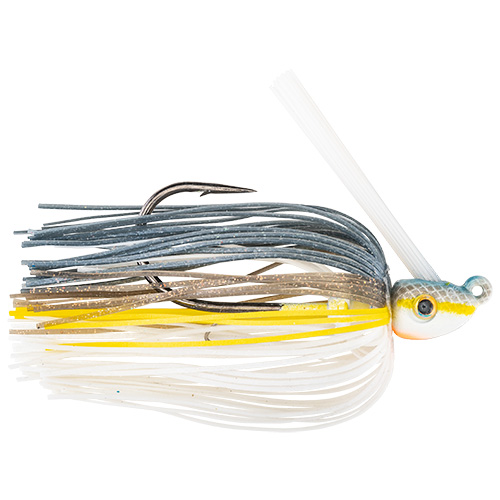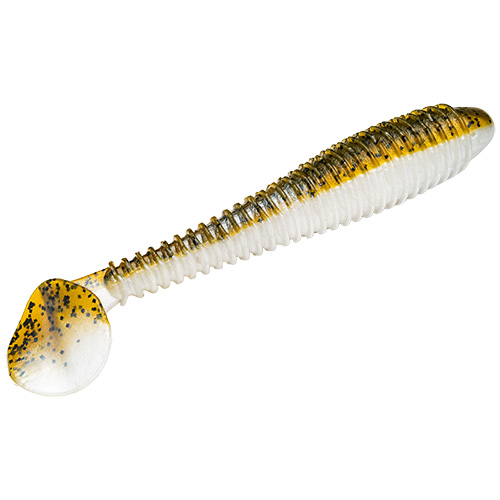Early summer shallow water bassin'!
By Mike Frisch
Early summer is a great time of year to chase largemouth bass. Many fish are now recovered from the spawn and are feeding aggressively. And, many are still roaming shallow to mid-depth waters and can be caught throwing a swim jig, which just happens to be a favorite bassin’ presentation for many anglers, this one included!
Early summer finds bass roaming shallow to mid-depth flats, often those featuring cover like pencil reeds, other emerging weeds, and fallen timber. Also, shorelines with lots of man-made cover like docks and boatlifts are other potential hotspots.
When fishing reeds, I like to move along throwing a swim jig to the edges of the reed patches, or right through them if they are not too thick, and quickly retrieving it back. Often, as the bait caroms off a reed, an aggressive bass will come up and eat it, and then it’s game (or should I say fish) on! One tip for effective casting in reeds it to observe the way the wind has blown the reeds and to fish that direction. Fishing “with the reeds” is usually more productive and results in a lot less “reed hook-ups” than fishing across the reeds!
When targeting docks, boat lifts, and trees, I position the boat so that I can swim the jig along the sides of the dock, lift, or tree and then also make casts to the covers’ outer edges. It pays to make note of where the bites are coming from as oftentimes a pattern will emerge. For example, maybe most fish are holding close to shore along the shaded dock sides, and so making multiple casts to those areas results in the most bites.
My swim jig set up consists of a skirted style bass jig particularly designed for the technique and then tipped with some form of soft bait action tail.
I like ¼ or 3/8-ounce Hack Attack Heavy Cover Swim Jig which has a stout hook and weed guard that works great when fishing around reeds, docks, and trees. I often tip the jig with a Rage Swimmer. This bait has a soft-ribbed body and pancake-like tail that provides vibrations that work great for attracting bass and triggering bites.


When the fish are very aggressive, or when fishing a bit deeper water, I will opt for the heavier jig, while the shallowest waters often call for the lighter offering.
In the clear waters that I usually fish, natural color patterns often shine. For example, a white or sexy shad jig works great when paired with a similar colored trailer. Also, because shallow water bluegills are prime forage for bass now, bluegill patterned jigs and trailers often produce fish. Experimenting with color patterns and letting the fish determine the “color of the day” is always sound advice.
This style fishing calls for baitcasting gear. I have had very good success recently fishing swim jigs on a 7-foot Lew’s Mach 2 baitcast combo. This combo features a sensitive rod with a Winn split-grip handle and has a reel that is smooth casting, lightweight, and durable.
Spooling the combo with fluorocarbon line completes my swim jig set up. Fluorocarbon is nearly invisible in clear water and has low stretch which allows for solid hooksets when bass hit at the end of long casts. P-Line Tactical fluorocarbon in 14-pound test is my choice because it allows for ultra-long casts and is abrasion resistant for fishing around cover too.
Hooking big bass at the end of long casts is one of my favorite early summer fishing tactics. Using the tips just provided can probably help you get in on some of this fast, early summer fishing action as well. As always, good luck on the water and remember to include a youngster in your next outdoors adventure!
Mike Frisch hosts the popular Fishing the Midwest TV series. Visit www.fishingthemidwest.com to learn more!
Photo – Swim jigs catch bass holding along pencil reeds!

